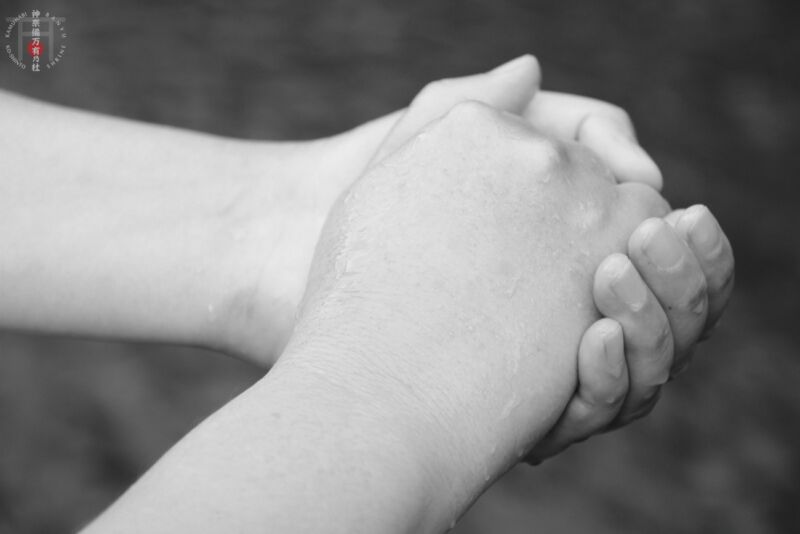
3) You practice something called Ko-Shinto, or Ancient Shinto. Could you briefly outline the differences from normal Shrine Shinto.
I am actually trained in both Shinto and Ko-Shinto. You can see both elements from my ceremonies, practices, lectures, kagura, and so on, yet with emphasis on Ko-Shinto. Both Ko-Shinto and Shinto have their own roles for different people/occasions, while I maintain that Ko-Shinto can give you answers or more reasonable explanations for what Shrine Shinto can not.
KO-SHINTO (Ancient / Old Shinto) is the indigenous Japanese spirituality/belief since Jomon Period which peacefully lasted over ten thousand years, the longest in Japanese history. There is almost no archaeological evidence of war weapons or traces of killing. In short, Ko-Shinto is deeply in touch with the cycle of nature/the universe, balancing the physical and spiritual worlds, and rather more shamanistic than Shrine Shinto. The latter was formed following the Yayoi Period along with the nationwide expansion in rice agriculture, silk production and ironware, together with the introduction of Buddhism and religions of foreign origin.
Ko-Shinto is also an abbreviation of Fukko-Shinto, which was advocated by Japanese classical scholars during the Edo period, for reviving or returning to the spirituality of Ko-Shinto. The major differences from Shrine Shinto are as follows below (though they can also sometimes be found in Shrine Shinto too as it originated from Ko-Shinto):
* Himorogi-shiki, instead of Shrine Shinto’s usual Chinza-shiki
In Himorogi style, priest/priestess calls down Kami to descend for a moment into a sacred tree, sacred rock, or evergreen branch in order to conduct ceremonies, then take leave of Kami to ascend at the end of the ceremonies. To attend ceremonies in this style, worshipers walk (or climb) a long distance to get to the sacred site in Daishizen (‘great nature’).
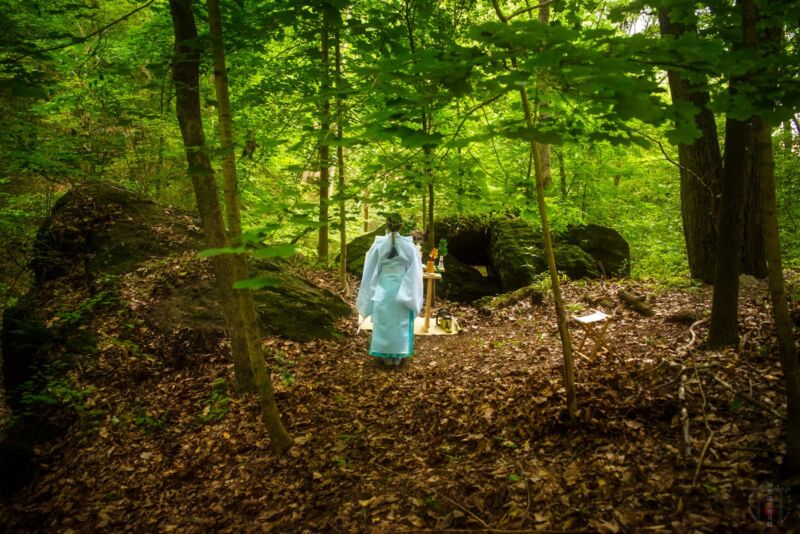
On the other hand, Chinza style permanently enshrines Kami into the Go-Shintai (divine body), which is sitting inside of the Honden, the main shrine building. Majority of Shrine Shinto is Chinza style with some exceptions, such as those still preserving the Ko-Shinto way based on their long shrine history. Chinza style shrines are mostly built in local communities.
* Go-Shintai/Divine body is Kamunabi
In Ko-Shinto, the sacred nature sites called “Kamunabi” where Kami dwell are the divine body since ancient times. Kamunabi includes sacred mountain, island, forest, gigantic tree, rock, hill, waterfall, ocean, Himorogi and so on. Majority of Go-Shintai under Shrine Shinto are found inside the Honden, the main shrine building, except for Ko-Shinto style shrines.
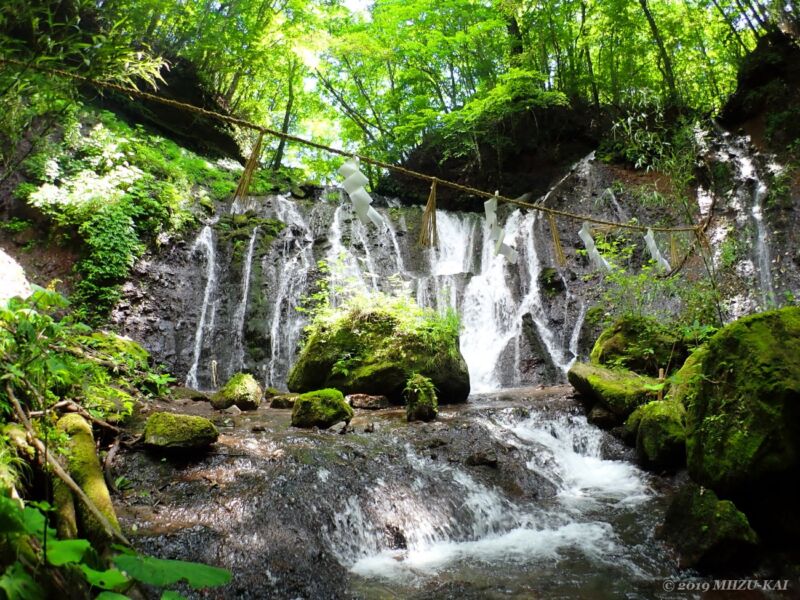
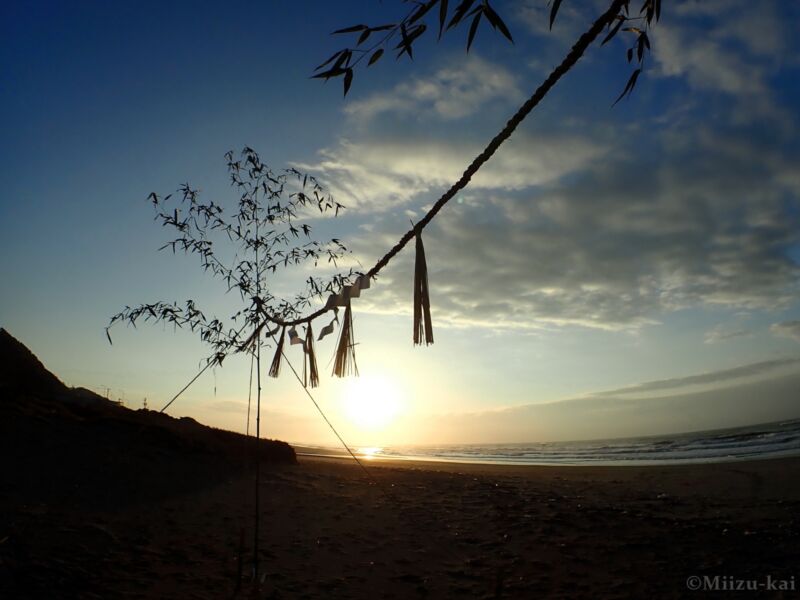
* Play the ancient stone whistle to call down the Kami
* Slight uniform difference
Hair piece in Ko-Shinto is Sakaki evergreen branch to preserve the ancient way, instead of man made Eboshi/ Nukaate hat, or Saishi Kanzashi.
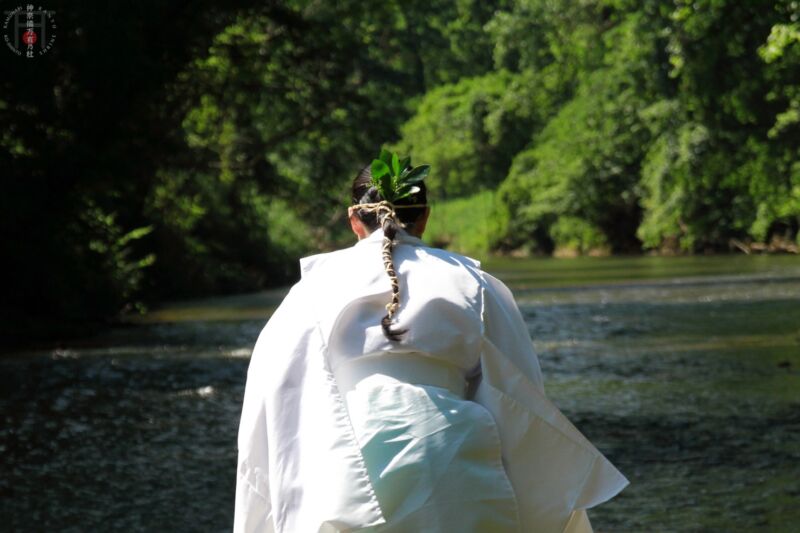
* Distinctive practices
Including Misogi-harae purification practice originally systematized by Bonji Kawatsura sensei who founded Miizu-kai to which I belong, there are various Ko-Shinto gyouhou practices including Ko-Shinto Norito/Kototama and Kazutama numerology. Ko-Shinto practices directly resonate with the cycle of nature/universe to co-exist with them. It is an excellent study in spirit, mind and body, to polish oneself to live fully in one’s life.
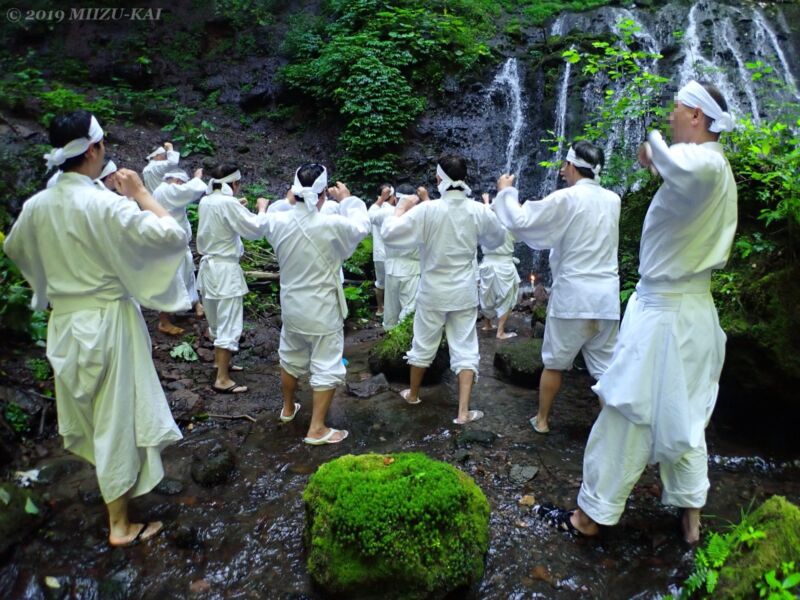
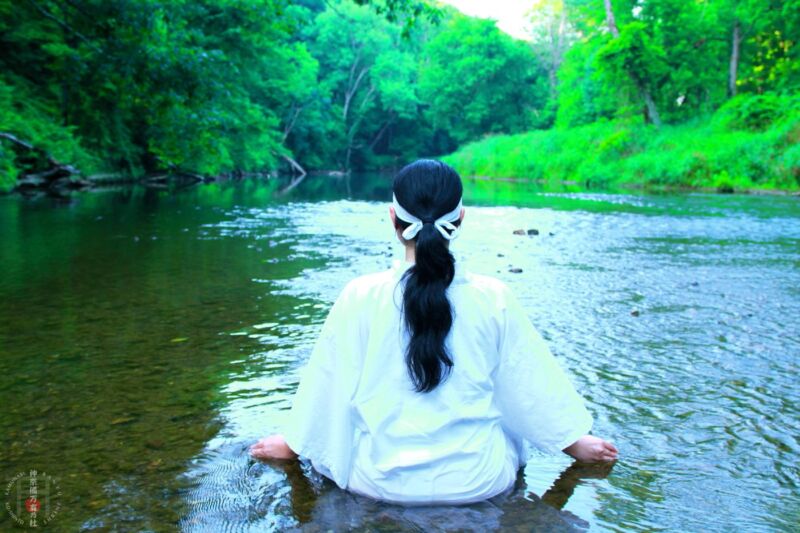
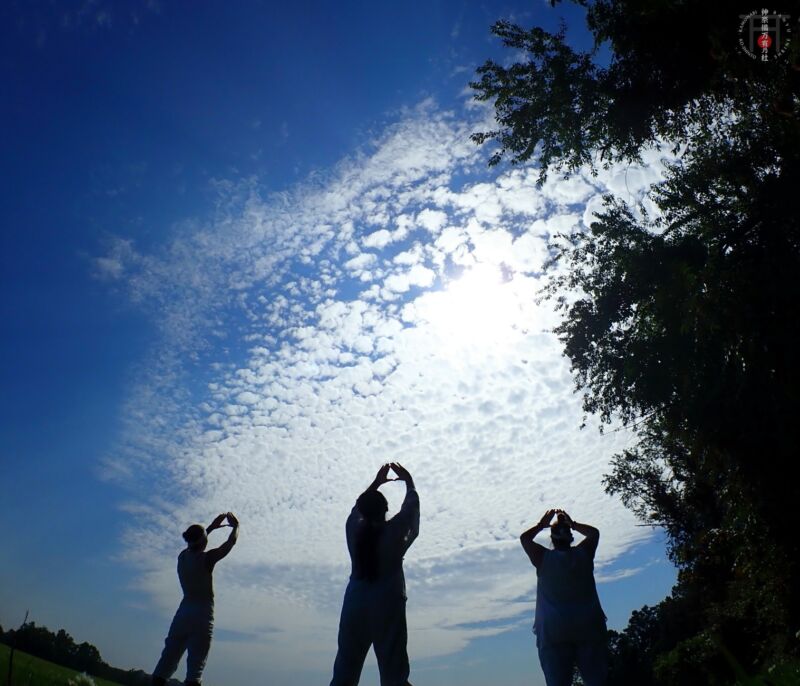
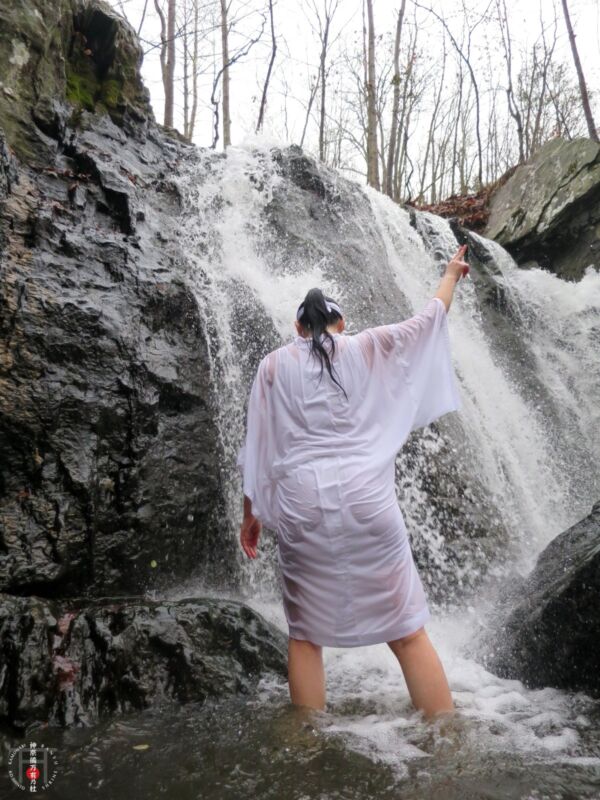
* Ken-sai and Yuu-sai
Shrine Shinto conducts Ken-sai ceremony, the form of which can be physically seen. Ko-Shinto has the depth to conduct Yuu-sai, which does not require a shrine building and can call down Kami anytime to the sacred site. This explains how Ko-Shinto gyouhou work also.
* Reincarnation
Ko-Shinto has its own concept of reincarnation based on the cycle of universe, nature and spirit, while Shrine Shinto does not cover this subject except for having a concept of continuation after death.
* Pantheism
Ko-Shinto is pantheism, while Shinto is perceived more as polytheism.



Thank you for this article. Now I know what my motjer does is Ko-Shinto..! Makoto House in Coromandel, New Zealand.
Thank you for your message. On google I could find a lot about a Makoto House in Tokyo but not in New Zealand. Is your mother running a Ko-Shinto organisation?